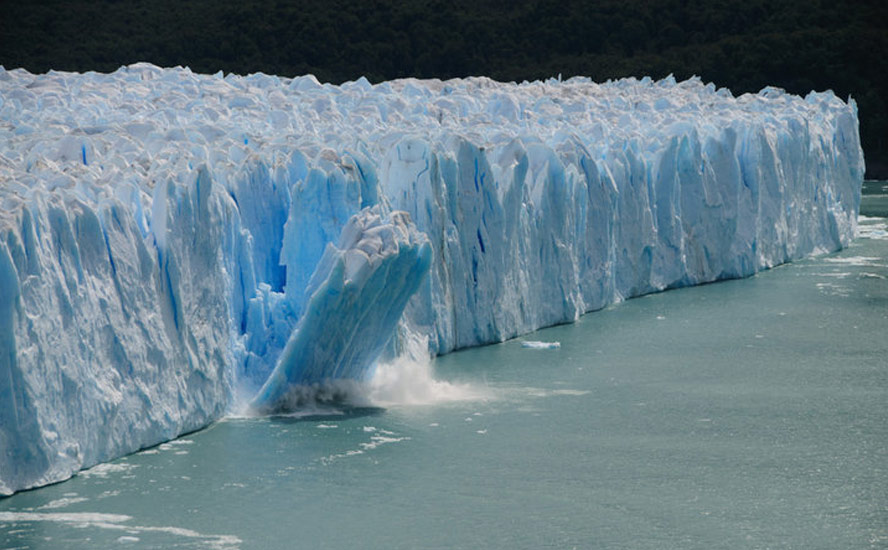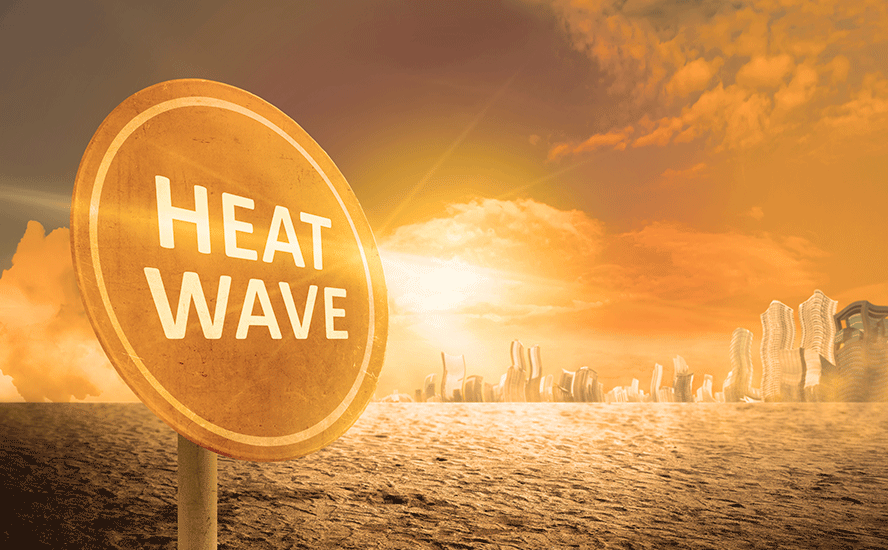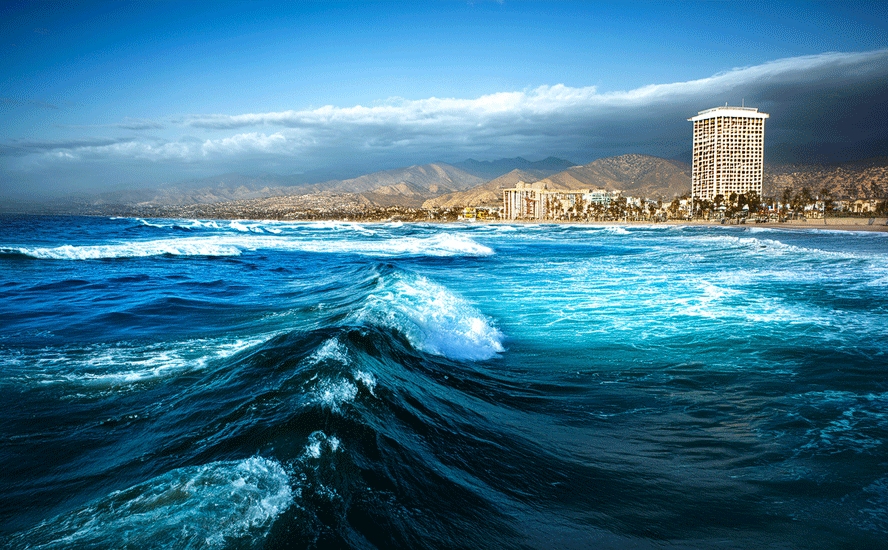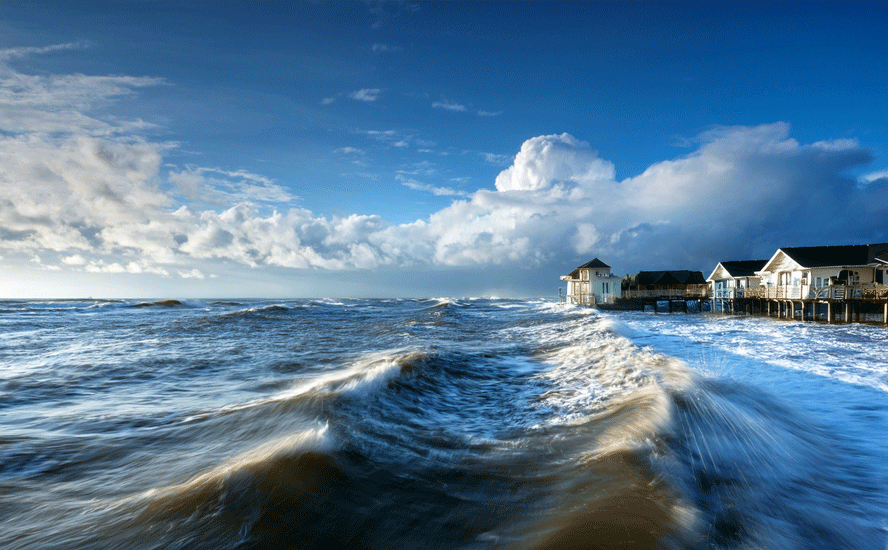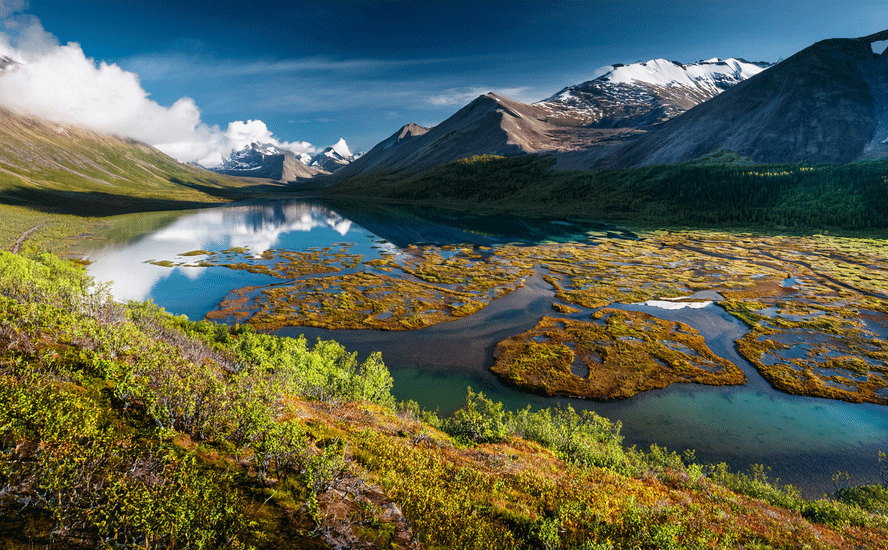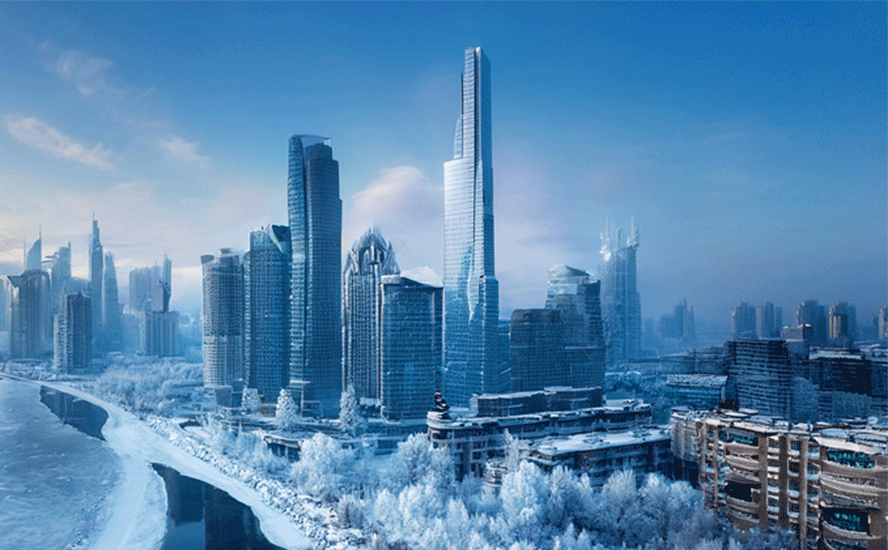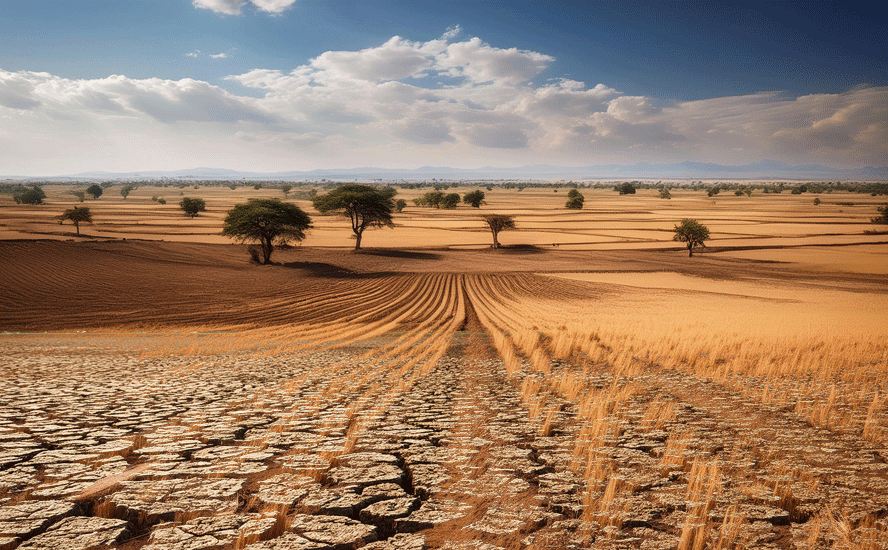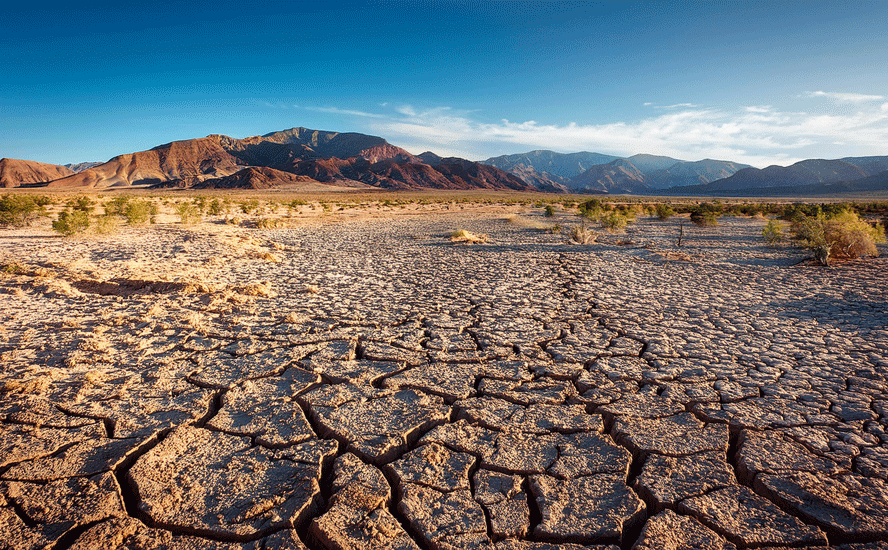What previous warming cycles tell us about current global warming – Richard Mills
2023.09.01
If you listen to mainstream media, climate change (a misnomer, the correct term is global warming, because the warming is not a change, it’s been going on for 21,000 years) has only one antecedent: human-caused emissions of carbon dioxide and other gases (methane, water vapor, nitrous oxide) that have been spewing into the skies since the Industrial Revolution. These greenhouse gases have caused heat to become trapped within the atmosphere.
While human-caused pollution is certainly degrading our soil, water and air, this theory does not take into account the natural cycles of cooling and warming that have driven climate change for billions of years.
Milankovitch’s Theory states that as Earth travels around the Sun, cyclical variations of three elements combine to produce variations in the amount of solar energy that reaches us. These three elements are:
- Variations in the Earth’s orbital eccentricity — the shape of the orbit around the Sun, a 100,000-year cycle.
- Changes in obliquity or tilt of the earth’s axis — changes in the angle that Earth’s axis makes with the plane of Earth’s orbit, a 41,000-year cycle.
- Precession — the change in the direction of the Earth’s axis of rotation, a 19,000 to 23,000-year cycle.

These orbital processes are thought to be the most significant drivers of ice ages and, when combined, are known as Milankovitch Cycles.
The last ice age occurred at the end of the Eemian (see below) to the conclusion of the Younger Dryas, a period running from about 115,000 to 11,700 years ago. The Last Glacial Period is part of a larger sequence of glacial and interglacial periods known as the Quarternary glaciation, which started around 2,588,000 years ago and is ongoing. (Wikipedia)
21,000 years ago the average global temperature was about 6 degrees C colder than today, with permanent summer ice covering about 25% of the land area. Sea levels were about 125 meters lower than present.
Warming cycles
According to Climate.gov, the planet has experienced cold periods, (known as glacials), and warm periods (interglacials) on roughly 100,000-year cycles for the last 450,000 years.
Over the course of these cycles, global temperatures have cooled or warmed within a range of 3 to 8 degrees Celsius.
The last glacial ended around 20,000 years ago, and after a few thousand years, a long-term warming trend began, that continues to this day. It is known as the Halocene Interglacial.
Interglacials and glacials coincide with cyclical changes in the Earth’s orbit.
Climate.gov maintains that interglacial periods such as the Halocene, are caused by variations in how much sunlight reaches the northern hemisphere in summer (i.e., Milankovitch Cycles). When Earth’s orbit made northern summers warmer than average, the ice sheets melted. When the orbit cooled northern summers, the ice sheets grew again.
However, these fluctuations are too small to bring about full-blown ice ages and interglacials. For that to happen, a series of feedback loops amplify the original cooling or warming.
During an interglacial:
- Sea ice and snow retreat, reducing the amount of sunlight the Earth reflects;
- Warming increases atmospheric water vapor, which is a powerful greenhouse gas;
- Permafrost thaws and decomposes, releasing more methane and carbon dioxide; and
- The ocean warms and releases dissolved carbon dioxide, which traps even more heat.
At AOTH, we know about feedback loops and have written about them extensively.
The Halocene
About 20,000 years ago, the ice sheets covering much of North America, Europe and Asia stopped advancing.
For unknown reasons, the Southern Ocean began releasing carbon dioxide into the atmosphere, at concentrations of more than 100 parts per million over a millennium, roughly equivalent to the amount of CO2 rise in the past 200 years (existing CO2 levels are about 400 ppm).
In other words, the natural release of carbon dioxide warmed the planet to within the precise temperature range that permitted life on Earth, and enabled humanity to thrive.
But the planet didn’t heat up evenly.
According to a 2016 study by a team of American geophysicists, following the last ice age, the Antarctic warmed two to three times faster — about 11 degrees C between 20,000 and 10,000 years ago, compared to a 4-degree temperature rise worldwide.
The southern-most continent also warmed faster than the Arctic. Within 15,000 years, the study based on analysis of ice core samples found that Antarctica had warmed about 75% of its current temperature, whereas the Arctic took another 4,000 years to warm this much.
The models, states Berkeley News, currently predict that because of climate change, Antarctica will warm twice as much as the rest of the planet, though it won’t reach its peak for a couple of hundred years.
The last ice age also provides intelligence regarding the likely rate of warming at the tropics.
Start with the fact that glaciers covered the higher latitudes, and temperatures plummeted. The tropics and mid-latitudes also saw temperature drops, but according to a 2021 study published in ‘Nature’, based on groundwater samples taken from all continents except Antarctica, the drop in temperatures at lower latitudes was much greater than previously estimated.
“This means that the Earth’s climate system is much more sensitive to changes in carbon dioxide concentrations than we thought,” said study co-author Martin Stute, a hydrologist at Barnard College and Columbia University’s Lamont-Doherty Earth Observatory. “So for the future, we can expect more climate change than we thought.”
Specifically, the study showed that low- to mid-latitude, low-elevation land surfaces cooled on average by about 5.8 degrees C during the last glacial maximum, compared to previous estimates of 1 to 4 C.
“This could be bad news for the future, because what goes down also goes up,” states a press release from Columbia Climate School.
The Halocene has witnessed all of humanity’s recorded history and the rise and fall of every one of its civilizations. Since it began 11,700 years ago, there have been small climate shifts, such as the “Little Ice Age” between 1200 and 1700 A.D., but in general, the Halocene has been a relatively warm period between ice ages.
Only in the last 300 years or so, since the Industrial Revolution, has the Earth warmed significantly, by an estimated 1.3 degrees C.
The past five interglacials

Consulting the above graph, the past four interglacials are clearly evident, with the first one starting around 400,000 years ago. Each interglacial lasts between 10,000 and 30,000 years, then the next glacial period starts. Glacials are much longer than interglacials, lasting 70-90,000 years.
Moving back in time, we have the Eemian (130-115 thousand years ago (tya); the Arousa Interglacial (242-230 tya); the Purfleet Interglacial (337-300 tya); and the Holstein/ Mindel-Riss (424-374 tya).
What were the conditions on Earth like in each of these past warming periods? To find out, scientists take sediment cores from the bottom of the ocean in various places and then measure the ratio of Oxygen 16 to Oxygen 18 in the calcite shells of deep-sea life forms known as foraminifera. The O18/O16 ratio changes over time, mostly as a function of the volume of glacial ice. Marine isotope stages (MIS) are therefore used as proxies for climate change.
Like the Halocene era, the Eemian period also saw global temperatures rise, in its case by 2 degrees Celsius.
A recent article in Time magazine states that with just 0.7 degrees more warming than currently, the effects on the planet were severe:
One study in Research Gate found that Eemian hurricanes were stronger and more northerly than those observed today—even increasing the incidence of winter storms, which lasted well beyond the contemporary hurricane season. Another, in Scientific Reports, found Eemian droughts and brush fires in Australia that lasted multiple centuries at a time. Yet more research in the Proceedings of the National Academy of Sciences reports that the Eemian was characterized by “‘superstorms’ more intense than any observed historically.”
It took a long time for the Earth to warm this much — according to the article, more than 16,000 years compared to the less than 300 years it has taken for the planet to warm 1.3 degrees, since the fossil-fuel age began.
Other manifestations of warming during the Eemian: sea levels were between 5 and 9.4 meters higher than today, and ocean temperatures were 2-3 degrees warmer. The proportion of CO2 in the atmosphere was about 280 parts per million versus about 400 ppm today.
According to an article by Oxford University, Eemian ice sheets were much smaller, forests extended into the Arctic Circle and there were hippos in Britain. In Africa, the equatorial forest extended farther than currently and the Sahara was constituted by a savannah, states Science Direct.
The scientific evidence regarding the next three interglacial periods is less abundant, however we know the Purfleet Interglacial, also known as Marine Isotope Stage 9, lasted from 337,000 to 300,000 years ago and corresponded to warming periods in Britain, Europe and North America.
According to a Wikipedia page, Purfleet temperatures were above -4 degrees C for the first 16,000 years, and the following 4,000 years saw a 3.5-degree increase above those of our modern climate.
Also of note: Europe was occupied by Homo heidelbergenesis, who had retreated from Britain during the preceding glacial period and returned as the climate warmed and sea levels rose about 330,000 years ago. Evidence of this early human species, including thousands of axes, has been found along the Thames River in the UK and the former Solent rivers in Europe.
A 2006 study investigated the five isotopic interglacials, using deep-sea cores from off the northwest coast of Spain, containing foraminifera (benthic and planktic oxygen isotopes) and marine pollen deposits.
The study found that during the last five interglacials, warm periods in northwestern Spain were characterized by the development of temperate and humid forest, principally deciduous oak.

The record of planktic foraminifera assemblages for MIS 11, 9 and 7 (corresponding to the Vigo, Pontevedra and Arousa interglacials in the Iberian Peninsula) showed that tropical and summer subtropical species reached their maximum development during warm periods.
Moreover, each isotopic interglacial was characterized by three major warm periods associated with low ice volume.
As for which period was the warmest, some works suggest that MIS 11, the Vigo Interglacial, which occurred before the Pontevedra Interglacial, shows the highest temperature of the last 450,000 years. Other works challenge this notion, saying that in fact the Vigo was not warmer than today.
Ice-core records from Vostok, Antarctica show the highest temperatures were during the Pontevedra, but newer (2004) data revealed higher temperatures in Antarctica occurred during Vigo than the Holocene.
Further complicating the picture, the Arousa Interglacial is marked by the highest percentage of temperate and humid trees.
The study concludes that, “the Vigo interglacial may be the warmest period of the last 450,000 years, but the difference of temperature does not appear large.”
Conclusion
Let’s review what we know. We’ve had five interglacial/ warming periods over the past 450,000 years, with each lasting 10-30,000 years.
We are currently in the Halocene interglacial which started about 12,000 years ago. There was about 8,000 years between when the ice sheets retreated ~20,000 years ago, to when the Earth started warming.
But if we go back half a million years, we find that there have been four cycles of warming and cooling, defined by interglacials and glacials. Remember, this is within the Quarternary glaciation, which started around 2,588,000 years ago and is ongoing. (Yes, despite all the talk of global warming, we are still technically in an ice age!)
The last interglacial before the current one, the Eemian, resulted in significantly more climate change than we are currently seeing, and that was with only 0.7 degrees more than the current 1.3-degree rise in temperatures.
Sea levels were up to 10 meters higher than today, and ocean temperatures were 2-3 degrees warmer.
Temperatures during the Purfleet Interglacial were 3.5 degrees higher than our current climate.
A study of deep-sea sea cores from off the northwest coast of Spain showed that for the five isotopic interglacials, warm periods in northwestern Spain were characterized by the development of temperate and humid forest. Each isotopic interglacial was characterized by three warm periods associated with low ice volume.
Now let’s revisit the idea that interglacials and glacials coincide with cyclical changes in the Earth’s orbit.
Interglacial periods such as the Halocene are caused by variations in how much sunlight reaches the northern hemisphere in summer (i.e., Milankovitch Cycles).
However, these fluctuations are too small to bring about full-blown ice ages and interglacials. For that to happen, a series of feedback loops amplify the original cooling or warming.
During an interglacial:
- Sea ice and snow retreat, reducing the amount of sunlight the Earth reflects;
- Warming increases atmospheric water vapor, which is a powerful greenhouse gas;
- Permafrost thaws and decomposes, releasing more methane and carbon dioxide; and
- The ocean warms and releases dissolved carbon dioxide, which traps even more heat.
We have been experiencing all the above feedback loops, during our current warming cycle which has been happening since the Halocene Interglacial began about 12,000 years ago.
They amplify the warming or the cooling that is, and was, already happening naturally. Remember, each warming cycle is followed by a new cold cycle, the next ice age.
The question is, are we just following the natural cycles of warming and cooling, that would have happened anyway?
Remember, interglacials last 10-30,000 years and with ours beginning 12,000 years ago the questions we are interested in are; how long does the current interglacial last, how bad is it doing to get heat rise wise, and what will be the effects? And of course when are we do for due for a shift to the cold locker?
Many believe that anthropogenic global warming is putting the next ice age on hold — one estimate has warming lasting for 10,000 years.
Here’s a clue that shows we may be throwing a wrench into the natural ebb and flow: during the Eemian Interglacial, the proportion of CO2 in the atmosphere was about 280 parts per million versus about 400 ppm today.
Is it possible for that much carbon dioxide to get into the atmosphere through natural CO2 release? It seems unlikely.
About 20,000 years ago, the Southern Ocean began releasing carbon dioxide into the atmosphere, at concentrations of 100 parts per million over a millennium, roughly equivalent to the amount of CO2 rise in the past 200 years. It took a thousand years for CO2 to increase to 100 ppm, naturally, but we’ve done that in one-fifth of the time. Again, it seems quite unlikely for that to be down to natural warming.
In my view, the more likely scenario is that we, through our own carbon emissions, are simply accelerating what was already happening naturally, warming the planet to the point where it stops, and starts cooling again. However, our pollution has become its own feedback loop.
The unsettling conclusion is nobody knows what this new variable will mean to long-term climate patterns. There is little doubt that man’s impact on atmospheric CO2 has pushed us beyond the Earth’s natural rhythms.
Richard (Rick) Mills
aheadoftheherd.com
subscribe to my free newsletter
Legal Notice / Disclaimer
Ahead of the Herd newsletter, aheadoftheherd.com, hereafter known as AOTH.
Please read the entire Disclaimer carefully before you use this website or read the newsletter. If you do not agree to all the AOTH/Richard Mills Disclaimer, do not access/read this website/newsletter/article, or any of its pages. By reading/using this AOTH/Richard Mills website/newsletter/article, and whether you actually read this Disclaimer, you are deemed to have accepted it.
Any AOTH/Richard Mills document is not, and should not be, construed as an offer to sell or the solicitation of an offer to purchase or subscribe for any investment.
AOTH/Richard Mills has based this document on information obtained from sources he believes to be reliable, but which has not been independently verified.
AOTH/Richard Mills makes no guarantee, representation or warranty and accepts no responsibility or liability as to its accuracy or completeness.
Expressions of opinion are those of AOTH/Richard Mills only and are subject to change without notice.
AOTH/Richard Mills assumes no warranty, liability or guarantee for the current relevance, correctness or completeness of any information provided within this Report and will not be held liable for the consequence of reliance upon any opinion or statement contained herein or any omission.
Furthermore, AOTH/Richard Mills assumes no liability for any direct or indirect loss or damage for lost profit, which you may incur as a result of the use and existence of the information provided within this AOTH/Richard Mills Report.
You agree that by reading AOTH/Richard Mills articles, you are acting at your OWN RISK. In no event should AOTH/Richard Mills liable for any direct or indirect trading losses caused by any information contained in AOTH/Richard Mills articles. Information in AOTH/Richard Mills articles is not an offer to sell or a solicitation of an offer to buy any security. AOTH/Richard Mills is not suggesting the transacting of any financial instruments.
Our publications are not a recommendation to buy or sell a security – no information posted on this site is to be considered investment advice or a recommendation to do anything involving finance or money aside from performing your own due diligence and consulting with your personal registered broker/financial advisor.
AOTH/Richard Mills recommends that before investing in any securities, you consult with a professional financial planner or advisor, and that you should conduct a complete and independent investigation before investing in any security after prudent consideration of all pertinent risks. Ahead of the Herd is not a registered broker, dealer, analyst, or advisor. We hold no investment licenses and may not sell, offer to sell, or offer to buy any security.
Legal Notice / Disclaimer
Ahead of the Herd newsletter, aheadoftheherd.com, hereafter known as AOTH.Please read the entire Disclaimer carefully before you use this website or read the newsletter. If you do not agree to all the AOTH/Richard Mills Disclaimer, do not access/read this website/newsletter/article, or any of its pages. By reading/using this AOTH/Richard Mills website/newsletter/article, and whether you actually read this Disclaimer, you are deemed to have accepted it.



